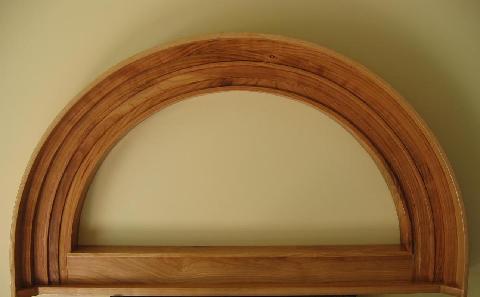Question
I have a job that has some wide oak floorboards that I need to match in with. They have had a technique applied to them known as brush and burn. As far as I know this means that they have been first burnt with a blowtorch and then wire brushed. However, I have no specific info on how exactly to do this, such as what type of wire brush to use, hand/drill driven etc. I was wondering if anyone could offer any advice on this technique?
Forum Responses
(Architectural Woodworking Forum)
From contributor R:
We do it a lot. We have one of those wide flame torches for doing shrink wrap covering like they do on boats. You could use the wand type for weeds you hook up to a propane tank. We have several options on the brush but the cheapest to start with a Makita brush tool from Timberwolf Tools. It comes with the 100 grit nylon brush and I'd recommend you get the steel brush as well and do some samples to see what the customer wants. You could make and arbor and stack a bunch of brushes on a homemade arbore and put it on a drill. You can put some bearings on a pipe for an outboard handle. Higher speed is better than 500 rpm. Been there and done all that.
Not sure I can stretch to the Makita for this job, although it does look the tool for the job. Will try the drill method you mentioned. What are the best brushes to get? Nylon ones I wouldn't have thought would be hard enough to pick out the grain in oak, although I may be wrong. Steel brushes, on the other hand, sound a little too harsh. Brass maybe?
We just do stuff because we know very few folks have done it before so there's really no one to ask. Start playing with chemical, brushes and keep a record of what you did with samples. Don't be afraid to try anything. Don't expect many folks to even share "secret techniques". Nobody told us how to do it.
Like I said just go out and do it and keep your own records. Experimenting costs but it's the cost of doing business and if you can do what no one else can you will get more business as you figure out how to price it so you don't lose your shirt.
The best results with fuming are to actually seal up a chamber. Spraying it on isn't really effective. We use a hundred lb tank of anhydrous ammonia. Before that we used blueprint ammonia in a sealed chamber overnight. This was timbers, millwork. An interior we would seal it off and let the fumes work overnight. It's highly corrosive and will rust and corrode metal. Better to fume before the install.
As for the fuming, yes I have heard that the best technique is to use the ammonia fumes in a sealed area. However, a lot of the work I have done is with retrofitted ceiling beam layouts into houses that are being lived in. Not sure whether I'd fancy releasing a load of ammonia fumes in that situation - I might kill the occupants and they wouldn't be able to pay me. Spraying it on in advance does seem to have a reasonable result (although perhaps not as good as the proper way of doing it). The oak goes a lovely walnut shell brown color and it is a lot more even than a stain.
